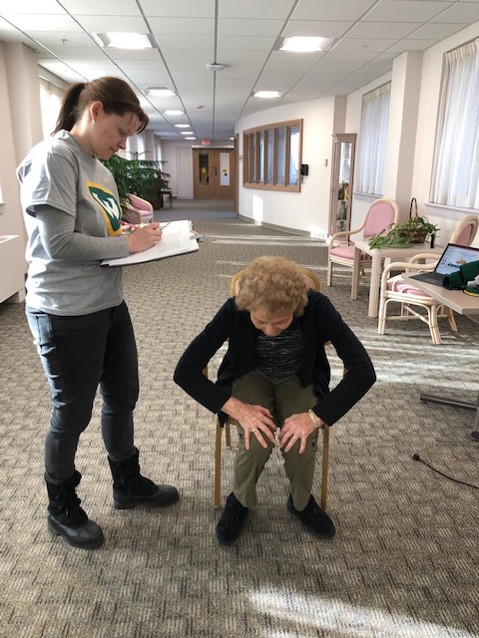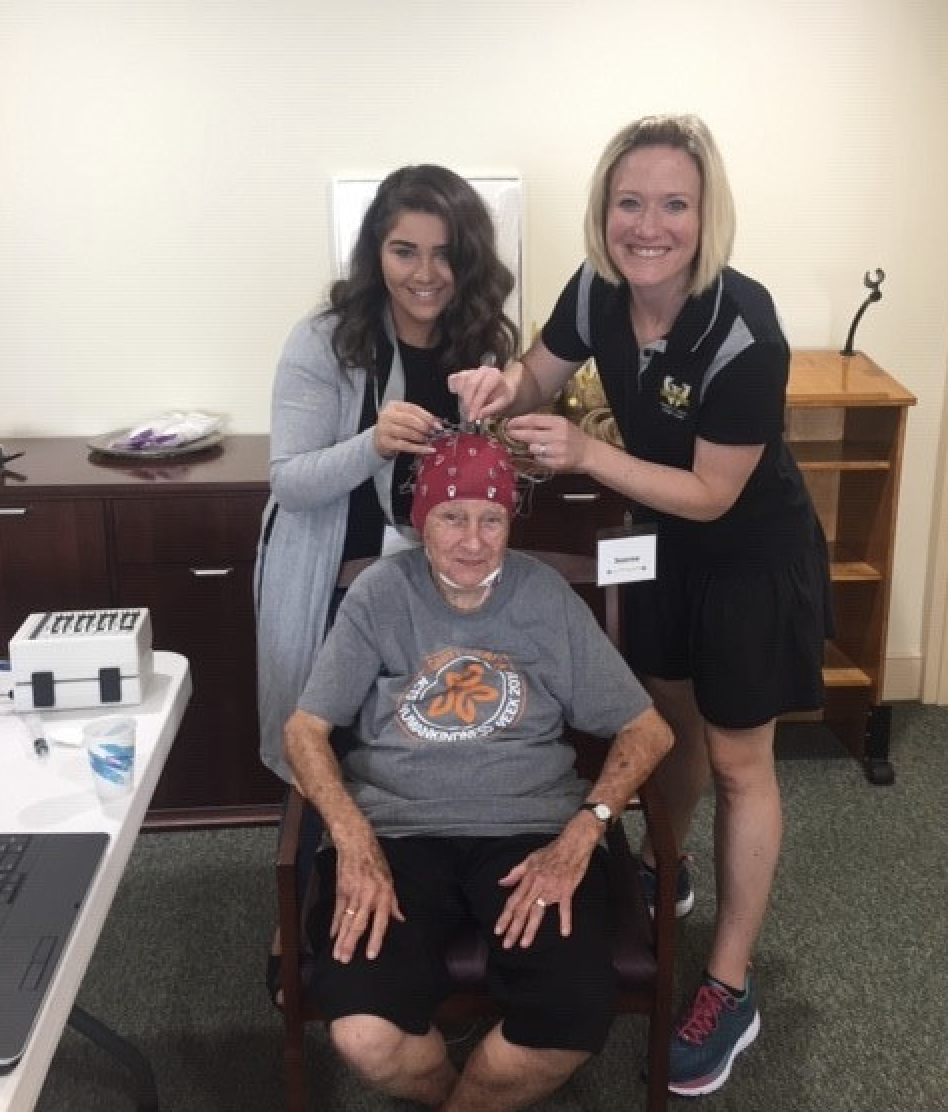Health researchers discover engaging mental processes while exercising builds brawn and brain

When Jeanne Barcelona joined the faculty in the College of Education's Division of Kinesiology, Health and Sport Studies, Mariane Fahlman volunteered to serve as her mentor. The two began discussing how to explore their individual interests in a shared study. Fahlman, a professor of health education, was studying functional fitness among aging adults. Barcelona, an assistant professor of community health, was researching physical activity and cognition among children."¯The SIENA (Sisters In Exercise and Neuro Activity) Study was born when the two decided to examine the effects of exercise and meditation on memory and attention among aging populations."¯"¯
Fahlman"¯and Barcelona explored"¯connections between physical functioning, cognition and prayer. Nearly 40 sisters (Catholic nuns) between the ages of 65 and 90 participated in the project."¯
Sisters engaged in"¯"functional fitness""¯activities - tasks"¯associated with daily living"¯such as walking, lifting and getting up from a seated position"¯- that measured their ability to live independently."¯Most sisters met or exceeded the range of muscle strength expected for their respective age group. Areas for improvement included balance, stability and endurance, which are important because they help prevent falls as people age."¯
"Fitness"¯is important to physiological and brain health as people age, and functional capacity is a measure of your ability to take care of yourself," said Fahlman. "As"¯people age and their ability to perform simple tasks becomes more difficult,"¯they"¯do less. They may"¯walk shorter distances,"¯buy fewer groceries, shower less often or drive to the mailbox. Eventually, they need assistance with all their daily activities.""¯
Sisters completed a variety of paper and pencil tests to assess their mental sharpness."¯They did well on attention and working memory tasks and exhibited outstanding word fluency, suggesting healthy functioning across critical areas of the brain."¯Barcelona said brain function, especially memory, is very important as people age.

"Memory is related to"¯mild cognitive impairment,"¯including dementia,"¯that can occur as we age," said Barcelona. "If we can reduce or prevent these levels of decreasing functionality, we can improve quality of life. We want to make sure people can cognitively engage in their environment by"¯remembering"¯people's names, what"¯they"¯are supposed to do during the day"¯and"¯where"¯they"¯are supposed to be at any given moment.""¯
Researchers used an electroencephalogram (EEG) to measure changes in brain waves between resting and prayerful states."¯They found that, as a community, prayer increased brain activity and positive emotion and reduced stress."¯However, participants who prayed more often were also more sedentary.
"Results illustrate that contemplative prayer facilitates brain activity and taps into working memory," said Barcelona. "We need to think about how this type of focused meditation in combination with physical activity may open up a new level of working out your brain while you are working out your body."
"Just sitting and completing brain boosters alone will not improve your memory and attention," added Fahlman. "Exercising and thinking improves your memory and attention. Doing both simultaneously builds brain matter and muscle. Nothing else does that.""¯
The pair hope to obtain funding for the next phase of their study, during which participants will practice 10 different functional flows over a 10-week period. Fahlman and Barcelona anticipate that participants will"¯improve their functional movements while getting deeper into contemplation, which will tap into - and boost- memory."¯Their goal is to help aging populations at large."¯
"If we can develop"¯a"¯15"¯to"¯20-minute"¯routine that"¯includes"¯simple stretching, breathing and meditative practices and improve quality of life, imagine the impact this could have on the larger population," said"¯Fahlman. "We could not only continue our work with the sisters, but we could also expand it to assisted living facilities in Detroit. From there, who knows?""¯
|
While dementia and Alzheimer's are complicated medical conditions with multifactorial behavioral, environmental and genetic causes, Fahlman and Barcelona suggest people can protect their brains as they age by practicing three basic behaviors:"¯"¯ "¯
|
by Tracy A. Walker